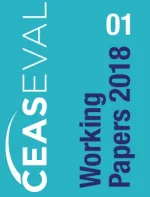Evaluation of the Common European Asylum System under Pressure and Recommendations for Further Development

CEASEVAL Working papers No.1
Since 2015, migration towards and within Europe has created a ‘stress’ in the EU asylum and migration systems, challenging the adequacy of the legal design of the Common European Asylum System (CEAS). In particular, the 2015 Refugee Crisis has raised major questions for what fair burden-sharing, and harmonization means in practice and whether the current CEAS can cohesively deliver a harmonized asylum system. The aim of the CEASEVAL project is to carry out a comprehensive evaluation of the CEAS in terms of its framework and practice. A major component of which is analyzing harmonization beyond the formal institutional settings, taking into account the multi-dimensional and complex relations between actors, and the challenges of the CEAS, including the political negotiation between the imperative need to address harmonization in asylum policy whilst at the same time appeasing rising public concerns over humanitarian immigration. In this report, the state of the art on public attitudes, media and political discourses on asylum seekers is presented.
The 2014-2016 Refugee Crisis has generated debate across the EU regarding the CEAS and beyond. The Crisis has unfolded in different ways in different states, with divergent triggering events forming part of the wider narrative. National discourses were internally diversified as different actors from political parties to civil society actors adopted opposing perspectives (Triandafyllidou 2018, p.199). The Crisis has been politicized generating conflict across the political spectrum, and increasing the salience of the issue. Such politicization stems from the way the Crisis has been reported, constructed and reconstructed through media and political discourses, leading to criticism of states for their inaction or unwillingness to adequately respond to the Crisis.